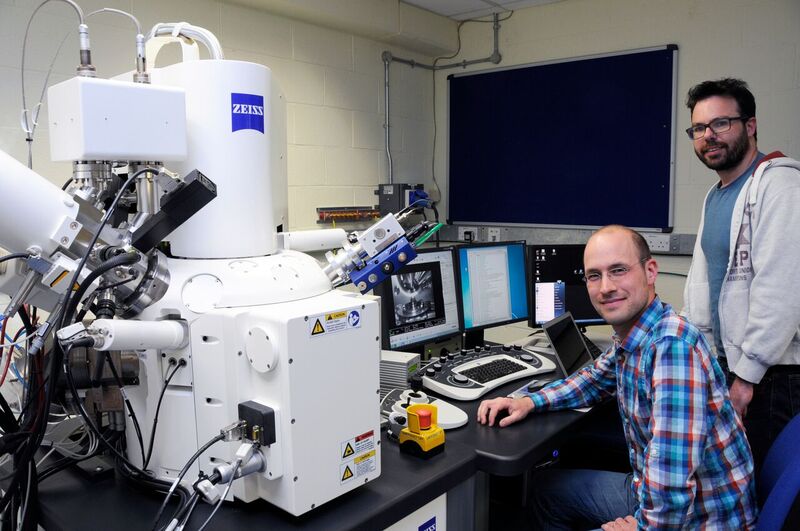A technique that revolutionised scientists’ ability to manipulate and study materials at the nano-scale may have dramatic unintended consequences, new Oxford University research reveals.
Focused Ion Beam Milling (FIB) uses a tiny beam of highly energetic particles to cut and analyse materials smaller than one thousandth of a stand of human hair.
This remarkable capability transformed scientific fields ranging from materials science and engineering to biology and earth sciences. FIB is now an essential tool for a number of applications including; researching high performance alloys for aerospace engineering, nuclear and automotive applications and for prototyping in micro-electronics and micro-fluidics.
FIB was previously understood to cause structural damage within a thin surface layer (tens of atoms thick) of the material being cut. Until now it was assumed that the effects of FIB would not extend beyond this thin damaged layer. Ground-breaking new results from the University of Oxford demonstrate that this is not the case, and that FIB can in fact dramatically alter the material’s structural identity. This work was carried out in collaboration with colleagues from Argonne National Laboratory, USA, LaTrobe University, Australia, and the Culham Centre for Fusion Energy, UK.
In research newly published in the journal Scientific Reports, the team studied the damage caused by FIB using a technique called coherent synchrotron X-ray diffraction. This relies on ultra-bright high energy X-rays, available only at central facilities such as the Advanced Photon Source at Argonne National Lab, USA. These X-rays can probe the 3D structure of materials at the nano-scale. The results show that even very low FIB doses, previously thought negligible, have a dramatic effect.
The scientific community has been aware of this issue for a while now, but no one (myself included) realised the scale of the problem. Given the role FIB has come to play in science and technology, there is an urgent need to develop new strategies to properly understand the effects of FIB damage and how it might be controlled.
Felix Hofmann, Associate Professor in the Department of Engineering Science, Oxford University
Felix Hofmann, Associate Professor in Oxford’s Department of Engineering Science and lead author on the study, said, 'Our research shows that FIB beams have much further-reaching consequences than first thought, and that the structural damage caused is considerable. It affects the entire sample, fundamentally changing the material. Given the role FIB has come to play in science and technology, there is an urgent need to develop new strategies to properly understand the effects of FIB damage and how it might be controlled.'
Prior to the development of FIB, sample preparation techniques were limited, only allowing sections to be prepared from the material bulk, but not from specific features. FIB transformed this field by making it possible to cut out tiny coupons from specific sites in a material. This progression enabled scientists to examine specific material features using high-resolution electron microscopes. Furthermore it has made mechanical testing of tiny material specimens possible, a necessity for the study of dangerous or extremely precious materials.
Although keen for his peers to heed the serious consequence of FIB, Professor Hofmann said, 'The scientific community has been aware of this issue for a while now, but no one (myself included) realised the scale of the problem. There is no way we could have known that FIB had such invasive side effects. The technique is integral to our work and has transformed our approach to prototyping and microscopy, completely changing the way we do science. It has become a central part of modern life.'
Moving forward, the team is keen to develop awareness of FIB damage. Furthermore, they will build on their current work to gain a better understanding of the damage formed and how it might be removed. Professor Hofmann said, 'We’re learning how to get better. We have gone from using the technique blindly, to working out how we can actually see the distortions caused by FIB. Next we can consider approaches to mitigate FIB damage. Importantly the new X-ray techniques that we have developed will allow us to assess how effective these approaches are. From this information we can then start to formulate strategies for actively managing FIB damage.'
